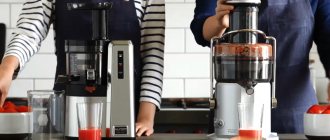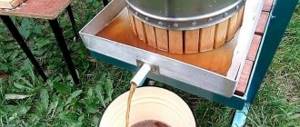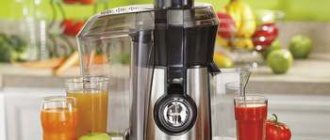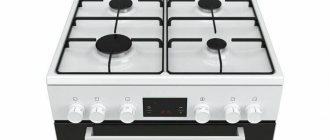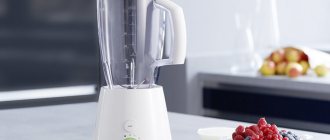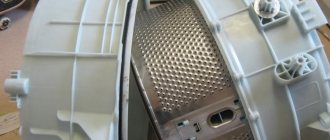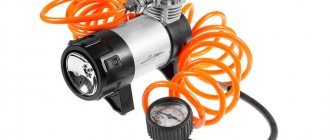Have you decided to store the juice for the winter, but are at a loss as to what is the best way to prepare the liquid for preservation? The VashTekhnik portal offers to figure out whether a juicer or a juicer is better suited for modern tasks in the kitchen.
The difficulty confronts housewives who spend a lot of time seaming and preparing preserves. If you are not sure how to prepare liquid for long-term storage, use the tips and detailed questions described on the website. You will acquire comprehensive knowledge on how to adequately prepare juice for further “packaging” for a long time.
The pace of human life is high, concern for health is gradually coming to the fore. Constant work in an office, factory, or other place forces you to take care of the immune system, fill the body with useful compounds and minerals, otherwise a person begins to get sick often and experience malaise and weakness. The task of properly preparing liquid from fruits or vegetables is of paramount importance.
Description of the juicer
If you want to constantly provide your family with healthy juice, consider purchasing a juicer, for example, a simple (manual) or complex (fully automatic). However, such devices are manufactured and later used for rapid squeezing and drinking of liquid. If you need to supply jars of juice, say, a year in advance, you need to learn the secrets and rules of canning in order to preserve the beneficial components and vitamins inside the “dish” for a long time.
So, juicer or juicer? As practice shows, large volumes of juice are difficult to prepare when it comes to a fresh product. In addition, after the work has been done, there is always a “cake” left in the juicer, which carries certain difficulties - leftovers. It turns out that a juice cooker is much more important for carrying out the procedure of preparing liquid for a long time. A larger quantity, the possibility of long-term storage - the use of juicers will be more effective.
Today, any equipment (juice cooker) does not burden the user’s time with additional steps to remove cake or pulp. At the end of the procedure, a healthy liquid with a consistency of 99% liquid is obtained in the pan. In addition, after the procedure, juicers always leave sediment that requires removal and washing. When the liquid is extracted from the fruit, this option cannot be preserved immediately; it will need to be sterilized or boiled. There is no such thing in juice cookers.
In general, the use of juicers is intended to be fully utilized when the consumer wants to obtain liquid and consume it immediately. If you want to save juice for the future, use the second type of device.
Note to the housewife: juice cooker or juicer - which is better?
Apparently, the pumpkins do not believe in your processing abilities and are afraid that most of the harvest will simply be lost, since you will not be able to cope with the influx of such happiness.
Indeed, growing a crop is still half the battle, and not always even the most difficult. But to process... Here sometimes you have to wrack your last brains, deciding what is better: pickled cucumbers, pickled cucumbers, or even just rolled in a salad? And if in a salad, then in what company?
In general, questions, questions and questions... And most of all, questions about jam. Apple, cherry, plum, currant... Anything!
Jam is a good thing. As well as homemade marmalade, jam and other sweet delicacies. However, many years of procurement experience have shown that strawberry and strawberry jam, as well as their derivatives, are guaranteed to be eaten. Raspberry jam also quickly disappears from jars in winter, especially when the cold season begins. But as for the rest... Oh, how much work you have to put in to get rid of at least one jar! Cottage cheese with jam, pancakes with jam, tea with jam (hide all the sugar first!), pancakes and pies with jam...
And the supply of jam is not decreasing. And they stay for next year. And there are the following supplies. The same unfortunate jam that no longer fits in any cabinet.
Out of complete despair, of course, you can start making alcoholic drinks from old jam. Or you can get a unit that will help you make not jam, but juices from everything possible.
Note to the housewife: any berries and fruits can be processed into juice - from currants to plums. Apples, pears, pumpkins, berries from the forest... By the way, blueberries and lingonberries are very good to add to classic apple juice; the assortment simply tastes delicious and is extremely good for health. That is, almost everything that grows on the site can become a wonderful jar of juice. Tomatoes, carrots, beets are no exception.
One question remains: what kind of kitchen utensils should I get? Should I buy a juicer or juicer? Which will be more useful for the household and more convenient to use? And most importantly, what will better help you obtain the final desired product, that is, juice.
Many people vote for a juicer, believing that this device produces the most natural juice. The juice cooker still cooks, and it also evaporates, so the juice is a little diluted, and - most importantly! - not so natural, because it had to be heat treated.
However, before you fall for the bait of naturalness, remember that juice squeezed out by a juicer must also be subjected to heat treatment if we are talking about its long-term storage.
In addition, it is completely natural juice, squeezed out by a juicer, usually with, as they say, pulp. Depending on the model of juicer, there may be more or less pulp. In general, this is an option for everyone. Especially when there is so much pulp that one can talk not about juice, but about a very liquid puree. In such cases, the squeezed juice has to be further filtered, and then the remaining pulp, which is full of juice, is squeezed out through gauze.
At the same time, the juice cooker produces a product that is transparent, like a tear, without any pulp. You can immediately place a sterilized jar under the juicer hose, collect hot juice in it and immediately roll it up. There is no need to first collect the juice, then bring it to a boil and only then pour it into jars and roll it up, as is the case with a juicer.
The juicer has certain restrictions on the product being processed: it must be sufficiently juicy, and the pulp must be easily separated. For example, it is almost impossible to obtain plum juice using a juicer, unless you also use gauze to make something resembling juice from the resulting pulp. It is also quite difficult to obtain juice from such “dry” berries as rowan, chokeberry, lingonberry and the like. The juice cooker is more democratic in this regard: it doesn’t care at all what was put into it as the initial product - plums, apples, pears, lingonberries or rowan berries. In any case, the output will be juice. Moreover, with minimal effort on the part of the owner of the unit.
By the way, about effort. The juicer is more demanding on raw materials. For example, it is recommended to remove the core from the same apples. The juice cooker will easily process apples, even with cores and tails. Unless you need to cut it to make the unit work easier and increase the amount of juice. Well, and at the same time make sure that no worm with suicidal tendencies is hiding in some apple, waiting for a hot sauna. But okay, apples, but anyone who had to extract seeds from cherries, plums, cherry plums before processing them into juice will instantly appreciate the fact that the juicer doesn’t care about the presence or absence of these same seeds.
There is one more nuance. A juice cooker is just a set of pans, one of which is filled with raw materials, another with water, and so on. The most delicate part in the juice cooker is the rubber hose through which the juice flows directly into the placed jar. A juicer is another. There are a lot of moving parts and parts that break. It can be electric - and then it is subject to all the damage that other electrical appliances are subject to. It can also be mechanical, with a manual drive, but even then it has enough parts that can break. If, in order to break a juicer, you need at least a sledgehammer, then the juicer can fail on its own, without any special external influences, simply from being tired of processing fruits and vegetables. Moreover, it will fail at the most inopportune moment, like everything that breaks.
Of course, everyone has their own preferences. Some people like juicers, others like juicers. But based on practical considerations, we can safely recommend purchasing a juicer - a small one, for one glass of juice, in order to prepare freshly squeezed live juice in the mornings and/or evenings, and drink it right there, without leaving far from the unit. This really is a natural product in which vitamins just jump over the glass.
Well, for home canning, for processing for long-term storage, a juice cooker is much more convenient. Less labor input means more product. And, by the way, the price of a juicer is significantly lower than the price of a juicer. This is not because the unit is so junk. There is simply a difference between a set of pots and even the simplest electrical appliance.
And so - think for yourself, decide for yourself... Good luck preparing for the winter!
Tags: kitchen utensils, notes for the housewife, juices, home canning, preparations for the winter
Descriptions of juice cookers
The specified unit is the best option for use when preparing a stored product. If you need to get liquid from a juicer, then rinse and clean it, boil it and sterilize it; in the case of juicers, you can immediately use the resulting product for rolling. The required procedures take place during the cooking process.
The undeniable advantage of the above-mentioned devices over others is the fact that in juice cookers the liquid from the fruits turns out sweet; when preserving, it is possible not to add sugar. On the contrary, when using juicers, there is no sweet taste naturally.
A device is known called a juicer-steamer. Together with the device, the user has the right to use the juice remaining after the juice evaporation procedure, for example, from tomatoes or berries. It is noteworthy that people are accustomed to using such “secondary juices” for repeated boiling (or squeezing) to obtain small portions of additional juice.
What is the difference between a juicer and a juicer?
A juicer is a simple device for heat treatment of fruits and vegetables. Structurally, the device consists of several parts:
- bottom pan for clean water;
- container for collecting juice located in the middle;
- top container with a lattice bottom for storing fruits and vegetables;
- covers;
- outlet hose with tap.
All three containers of the unit must be sequentially installed on top of each other. Liquid is poured into the lower container, chopped raw materials are placed in the upper container, and then the structure is placed on the fire. The water in the first pan boils, after which the steam rises and affects the food. Fruits and vegetables release juice, which flows into the middle cylinder. From it, through a hose, when the tap is open, the fresh juice flows into a tank placed outside.
When using a juicer, you must add water to the bottom pan as it evaporates.
Attention! Modern juice evaporation units can be equipped with temperature sensors. Such models allow you to precisely regulate the heating intensity of raw materials.
To understand whether a juicer or a juicer is better for apples and other products, you need to study the features of the latter. The device is designed to produce fresh juice without thermal exposure and consists of the following parts:
- electric motor;
- container for berries, fruits and vegetables;
- grinding mechanism - auger, disk graters or press;
- juice containers;
- pulp reservoir;
- pusher.
When using a juicer, add chopped fruits and vegetables into it in small portions. A pan or jar is pre-installed under the tap of the device to collect fresh juice. After this, the device is put into operation and the raw materials are automatically crushed. If individual pieces of vegetables and fruits get stuck in the neck, they are pushed using a pestle to the moving mechanisms.
Depending on the design, the juicer can produce a pure drink or fresh juice with pulp
Qualitative advantages of juice cookers
We will give readers points that will help them understand the pros and cons of boiling and squeezing juice.
- Juice cookers are universal due to their extremely simple design. They are convenient and safe to work with.
- If in a juicer you constantly need to disconnect the component units from the whole device for washing purposes, in juicers, cleaning is done in a practical form: it is proposed to put the system in a washing machine and remove it completely “ready”.
- Of course, using a juicer is better suited for preserving liquid from fruits than a juicer. The resulting juice may not be subjected to boiling or sterilization; the user will spend less time sealing the product for subsequent storage.
- If we are talking about a shelf life of within a week, the liquid obtained from a juicer has a longer shelf life than a juicer: the total length is 6-7 days without deterioration in quality.
- In part, expensive juicers are not inferior in performance to other technological products (juice cookers); in addition to extracting liquid from berries and fruits, they can prepare dietary dishes, steamed cutlets, omelettes and vegetables. Overall, the juicer looks more versatile.
Vitamins for every day. Choosing a juicer and juicer
Image source
What happens to fruits and vegetables when we close the machine lid behind them and press the button? Waiting for them there is a sharp disc grater and a so-called separator, in which the juice is separated and all the pulp falls on the bottom and walls. There are two types of separators: conical and cylindrical.
The conical separator is good because the pulp immediately falls into the container: there is no need to reach for it with a large spoon, get dirty, or wash the table and floor from sticky colored streaks. But the cylindrical one squeezes out twice as much juice, but - if it does not have an automatic pulp release function! - wants to be cleaned after two or three spins. It's up to you to decide which is better: cleaning the separator many times, purchasing a model with automatic reset, or buying more fruits and vegetables.
When choosing between conical and cylindrical separators, think about how much space in the kitchen you will allocate to your new assistant. The fact is that you can buy a device without a container for collecting juice, gaining centimeters in a tiny “Khrushchev” or “socket” kitchen. If the space allows, don’t hesitate, take it with a container: there will be less splashes on the tablecloth.
The rotation speed of the centrifuge determines how much juice you get. 8-12,000 rpm is quite enough, higher is no longer necessary: such a device will cost much more, and no one can guarantee that it works many times better. The amount of pulp and transparency depend on the speed of juice extraction. The lower the speed, the cleaner your drink.
And here is the pitfall. Any juicer, whether centrifugal or citrus, will need to be washed every time! Choose a device with a minimum of removable parts, otherwise you will suffer.
Carrots, beets, and potatoes are not so easy to process. If you want to extract juice from them, then the machine must have a pulse mode, in which the motor rotates with pauses in order to grind the vegetables more efficiently.
The direct juice supply system is available not only in mechanical hand presses, but also in electric units. Some models have a special drain spout; it can be lifted up so that drops of juice do not fall on the tablecloth. This mode is called “drop-stop”. But if you lift the spout too quickly, the juice remaining in the separator will be absorbed back into the pulp, so wait five minutes or a little more. And don't forget to lower the groove before starting work.
Apples, plums and pears are quickly processed and foam immediately appears on the surface of the juice. Most modern models have foam separators - plastic partitions built into the lids or juice reservoirs.
The juicer body can be made of aluminum, plastic, or stainless steel. Plastic ones are lighter, cheaper than everyone else, wash better, and can be found in almost every color of the rainbow.
Advantages of juicers
Now it’s time to describe the advantages of juice extraction units.
- If in a juicer a person gets a decent product from 1 kilogram of berries or fruits in 1 hour, in a juicer (fully automated and relatively expensive) one can count on providing liquid in 10-20 minutes. The time depends on the power and design of the device. For example, a SEPO juicer has been developed - a product of a domestic manufacturer, the plant is located in Saratov. It is worth noting that this fully electrified system allows you to work on obtaining juice extremely efficiently. 250 W will cope with the task in an extremely fast time. Small size and compactness will give the consumer a lot of free time, but juice cookers will take away.
- The second advantage is the relatively large volumes to work with. In certain cases, users have to interact with large volumes of apples. Antonovka is a strong variety; only a properly designed and powerful system of this nature can cope with huge displacements. Juice cookers will begin to evaporate the liquid for a long time, and it will not always be possible to prepare a considerable supply at once. The Antonovka Pro juicer, a product of the Russian Federation, offers to simplify the work and do it quickly. The device is supplied at a rated voltage of 220 V and operates on alternating current. The unit is equipped with double insulation and consumes no more than six hundred watts of power. Squeeze efficiency is approximately 85%. The main feature is that it is equipped with automatic “removal” of waste; it is easy for a person to work without having to stop for unnecessary cleaning.
Let's make juice from vegetables
If a person is a lover of vegetable juice and likes to drink liquid squeezed from tomatoes, he needs to choose a good and reliable device model that will help him obtain a healthy product.
Today, the creators have developed a good tomato juicer called the “Auger System”. Extracting juice from vegetables (in this case, from tomatoes) requires the presence of a powerful system; it is easier to obtain liquid from fruits.
Recently, juicers from Europe have become famous. The system, made in Italy, helps to fully automate the work process, when the user does not need to constantly turn the handle of a mechanical device. All that is required is the timely placement of the ingredient into the compartment.
Similar devices cost 25,000 rubles. These are small amounts for a sought-after product. The announced pricing policy suggests the use of the system at home and in industrial settings.
